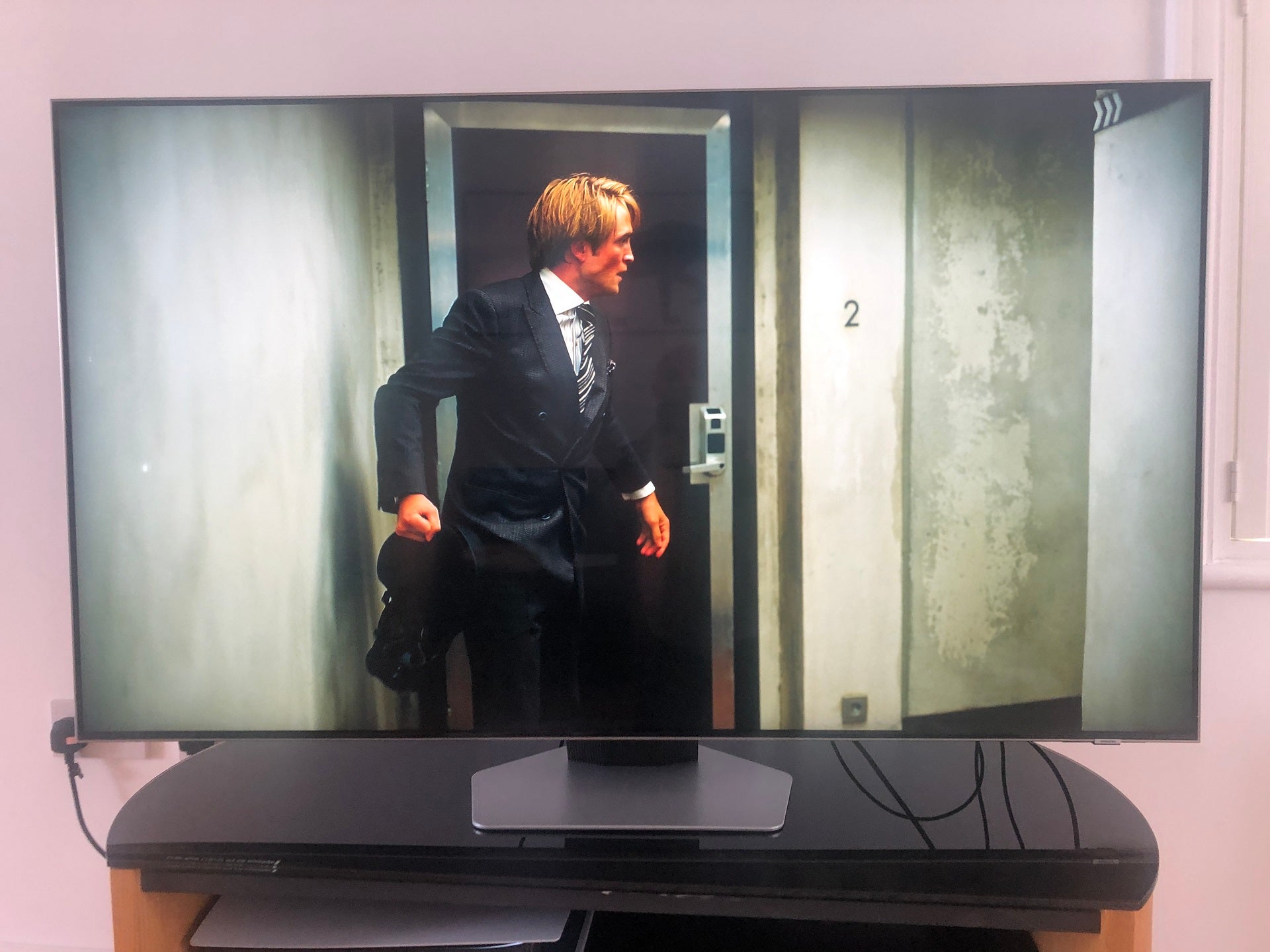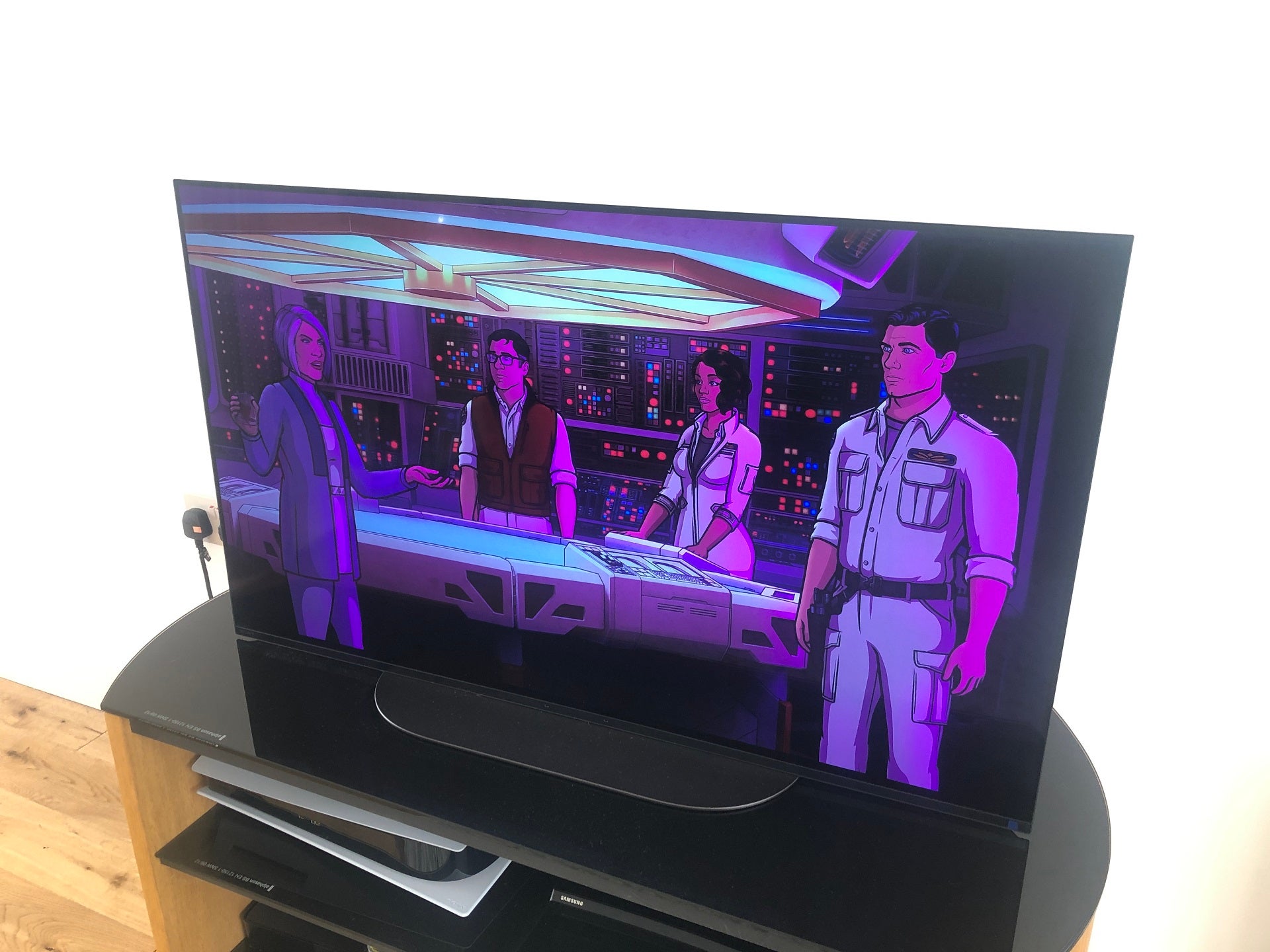Best 4K TV 2023: Our favourite sets to buy right now

Looking to replace your old TV or maybe add a second one to a spare room? We’ve got you covered with our round-up of the top 4K TVs available.
Given how infrequently we tend to upgrade our TV sets (at least in comparison to the likes of smartphones and laptops), it can be tricky to know where to start. Luckily for you, our team has been hard at work reviewing the latest 4K TVs as they release, so we’re up to date on which ones are actually worth your attention.
If you’re completely out of the loop then you should that 4K is now the widely adopted standard for display resolution, having superseded 1080p HD panels. 8K TVs are available, but they are still a while away from taking over 4K as the norm. Still, if you want to know more about that medium then you can check out our best 8K TV round-up.
It’s always worth mentioning that 4K TVs come in a range of price points which, while initially confusing, does mean that there’s more choice than ever, so much so that almost all budgets are now catered for.
For instance, entry-level 4K UHD TVs can be found well below the £500 mark, but things can get more expensive if you opt for premium sets that use either QLED or OLED technology. Still, from the best cheap TV, all the way up to the best OLED TV, this list features a solid range of what’s out there to make sure that your next upgrade is the perfect pairing.
If you already know exactly what type of TV you’d like to get then you can check out our rundown of the best TV deals. For everyone else, keep reading on to see which of the latest TVs impressed us the most.
Best 4K TV at a glance
- Best 4K HDR TV: Panasonic TX-55JZ2000 – check price
- Best 4K TV for movies: Sony XR-55A90J – check price
- Best mid-range 4K TV: LG OLED65C1 – check price
- Best Samsung 4K HDR TV: Samsung QE65QN94A – check price
- Best Philips 4K HDR TV: Philips 55OLED806 – check price
How we test
Every TV we review is put through the same set of tests to gauge its picture performance, usability, and smart features.
Tests are carried out over several days and are done by eye but supported with technical measurements. Testing by eye involves an expert watching a wide range of material to understand and determine a TV’s performance in fields such as brightness, contrast, motion processing, colour handling and screen uniformity.
We’ll consider the design of the TV in terms of build quality, study the spec sheets and see if the TV’s connections are up to spec, as well as playing video and audio content to ensure that the set handles playback as it claims. We also take note whether a product’s compatible formats and features are in line with industry trends or not to gauge whether it’s relevant for you.
Comparison to other related and similarly priced products is also important, to see if it’s missing any vital features and whether it impresses as a whole. After all this, we’ll come to a judgement on how the TV performs as a whole.
If you want to learn more, please visit our detailed page about how we test televisions.
- Super gaming performance
- Excellent contrast and sumptuous HDR
- Wide-ranging connectivity and smarts
- Weak sound
- Not the strongest motion stability
- Potential for image retention/burn-in
- Super bright 4K HDR performance
- Fast gaming performance
- Excellent build quality
- Solid app selection
- Proper expensive
- No Dolby Vision/Atmos decoding
- Not the most convincing motion
- Delicious, dynamic imagery
- Dolby Vision IQ, HDR10+ Adaptive support
- 360-degree Soundscape Pro audio system
- 4K/120fps HDMI inputs
- Pricey
- Sound system may be unnecessary for AV fans
- Superb picture quality
- Great new OS and remote control
- Some HDMI 2.1 compatibility
- Some HDMI 2.1 omissions
- Quite pricey

Panasonic TX-55JZ2000
Best 4K HDR TV
Pros
- Delicious, dynamic imagery
- Dolby Vision IQ, HDR10+ Adaptive support
- 360-degree Soundscape Pro audio system
- 4K/120fps HDMI inputs
Cons
- Pricey
- Sound system may be unnecessary for AV fans
If we’re talking about true 4K HDR prowess, then there are few better than the JZ2000 OLED from Panasonic. And with the LZ2000 in shops, the 2021 flagship is available for less than £2000.
The JZ2000 accommodates all HDR formats, so if you watch a wide range of HDR content, producing a higher peak brightness that is equal to the Philips 65OLED+936 and better than LG’s Evo OLED G1. Over the course of testing our assessment was that the JZ2000’s picture quality was class-leading among the 2021 OLEDs – the set’s HCX Pro AI processor delivers extraordinary nuance and detail. If you want to see what a movie looks like in a mastering suite, this is as close as you’ll get.
Considering the number of speakers built into the Panasonic JZ2000’s chassis, it’s remarkable it looks as svelte as it does. The screen sits on a neat circular pedestal stand with swivel action, offering flexibility to tweak the viewing angle. The new 360° Soundscape Pro iteration of its Dolby Atmos sound system is also quite a performer. When we watched films on the TV, the sound was larger, wider, and more exciting than any 55-incher we’ve tested.
Freeview Play guarantees mainstream catch-up TV needs are covered, and the addition of Disney+ and Apple TV+ widens the breadth of video streaming apps on offer. Gaming is improved over previous models with the addition of Dolby Vision Gaming, better input response and AMD FreeSync VRR though it still lags the LG C1 for sheer breadth of features.
The JZ2000 won’t be for those who already have a capable home cinema system but as an all-in-one audio-visual solution, we found the JZ2000 was the best OLED TV Panasonic has produced so far – until the LZ2000, that is.
Reviewer: Steve May
Full Review: Panasonic JZ2000

Sony XR-55A90J
Best 4K TV for movies
Pros
- Superb picture quality
- Great new OS and remote control
- Some HDMI 2.1 compatibility
Cons
- Some HDMI 2.1 omissions
- Quite pricey
The A90J is one of Sony’s Bravia XR Cognitive TVs, which features a processor that claims to work like how our brain does, boosting colour, contrast, and detail for a more lifelike image.
It’s not as slim as the LG G1, but its stand can be configured in more ways that offers a degree of flexibility in terms of placement. ALLM and VRR support were added in March 2022, but gaming features are still behind the LG C1 and Panasonic JZ1000.
We found using the Google TV interface to be a more welcoming affair than previous Android TV interfaces such as the one on Sony’s A8 model. Sony’s Bravia Core movie-streaming service has lots of content and streams in high quality (if you have the broadband speeds to match), as well as IMAX Enhanced content.
And when given high-quality content to work with, our reviewer found the Sony capable of producing profoundly impressive pictures. The overall colour palette was striking, the Sony drawing on a wide, subtle, and entirely convincing palette. Its motion skills show the Sony is at its most accomplished, gripping images with laser focus.
The A90J uses the company’s ‘Acoustic Surface Audio+’ technology and we enjoyed it, sounding more nuanced and more direct than flatscreens are usually capable of, though the bass performance is not as powerful as the Philips 65OLED+936. The A90J is a very good TV but it is bettered by the A95K QD-OLED. If you’re after the best picture quality from Sony, we’d recommend that model even though it comes at a premium.
Reviewer: Simon Lucas
Full Review: Sony XR-55A90J

LG OLED65C1
Best mid-range 4K HDR TV
Pros
- Super gaming performance
- Excellent contrast and sumptuous HDR
- Wide-ranging connectivity and smarts
Cons
- Weak sound
- Not the strongest motion stability
- Potential for image retention/burn-in
If you want an excellent LG OLED without splashing huge amounts of money, the 2021 C1 is still available and offers an excellent all-round performance at a more affordable price than the 2022 C2.
We found the picture quality to be particularly outstanding, with superb detail and great contrast that brought an excellent sense of depth to 4K HDR content. Complexions had a warm but natural appearance, while colours are rich and punchy. Whatever you’re watching on this OLED, it’s bound to deliver exciting and lush 4K HDR images.
This is one of the most gamer-friendly TVs available with a bundle of features that includes full HDMI 2.1 support across all inputs and support 4K/120Hz, ALLM and VRR too. We measured input lag at 12.5ms, which is quick, and will drop even further with higher refresh rates and game boost in play.
This model was one of the first to support the revamped webOS that dropped the launcher bar at the bottom of the screen (though you can still call it up). The idea is to make content easier to discover, and while it works it does lack the simplicity of the older menu. The main menu system is much improved on this set, no longer requiring users to wade through multiple menus to change something.
The only downside of the 65C1’s performance is its speakers. The sound quality is lacklustre with no real punch in the bass frequencies which can make some more impactful audio seem a little timid. Our recommendation would be to consider a sound system to partner this TV.
Reviewer: Kob Monney
Full Review: LG OLED65C1

Samsung QE65QN94A
Best Samsung 4K HDR TV
Pros
- Super bright 4K HDR performance
- Fast gaming performance
- Excellent build quality
- Solid app selection
Cons
- Proper expensive
- No Dolby Vision/Atmos decoding
- Not the most convincing motion
The Samsung QE65QN94A represents an immense 4K viewing experience complete with the wonderful vibrancy and brightness of a Mini LED backlight.
Picture quality on this 2021 effort is one of best we’ve seen from an LCD TV, the number of dimming zones allows for precise illumination in HDR content as well as delivering some OLED-esque black levels for terrific contrast. Its brightness also means that colours are punchy, expressive and wide-ranging in tone, and can be used both in bright and dark rooms. Just watch out for some minor instances of blooming.
We also found the QN94A to offer up a brilliant gaming experience, especially thanks to its rather input lag We measured at 9.4ms, which is lower than Samsung’s newer QN95B model. This figure can be reduced further with the addition of VRR into the mix for an even speedier gaming performance. Along with supporting the standard HDMI VRR, the QN94A has additional support for AMD FreeSync Premium Pro, although these are only available on one HDMI port, so you can’t connect multiple consoles/PC to this TV.
Overall, we found the speakers here to be impactful, generating a wide soundstage with its OTS+ audio system that tracks sounds as they move across the screen. Dialogue here is also crisp, but at times can feel flat and lacking in emotion, while with the lower end of the frequency range it lacks depth and extension. There isn’t any support for Dolby Atmos as you can find on the QN95B, though.
Reviewer: Kob Monney
Full review: Samsung QE65QN94A
We also considered…
FAQs
The LG OLED65C1 supports every gaming feature going, with ALLM, VRR, 4K/120Hz HFR, AMD FreeSync Premium, Nvidia G-Sync, Google Stadia and it’s now available for £1500.
The Sony A90J features excellent 4K HDR picture quality, with support for HDR10, HLG and Dolby Vision, impressive motion processing and excellent contrast. If you don’t have home cinema set-up, the TV’s Surface Acoustic speakers are very adept at delivering a direct and impactful sound for a flatscreen TV.








